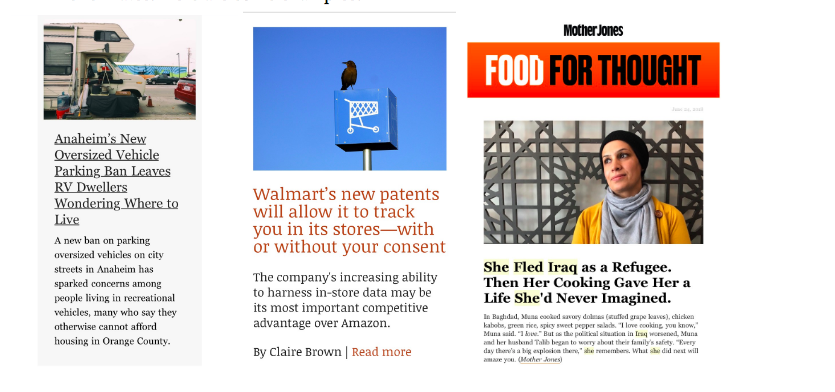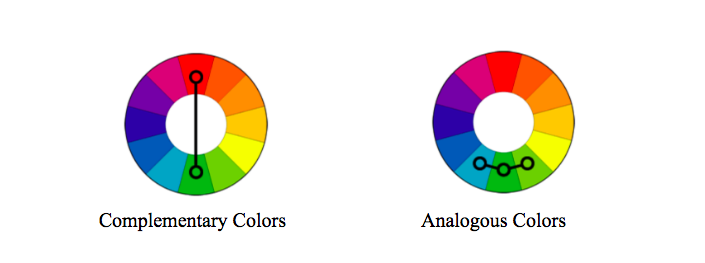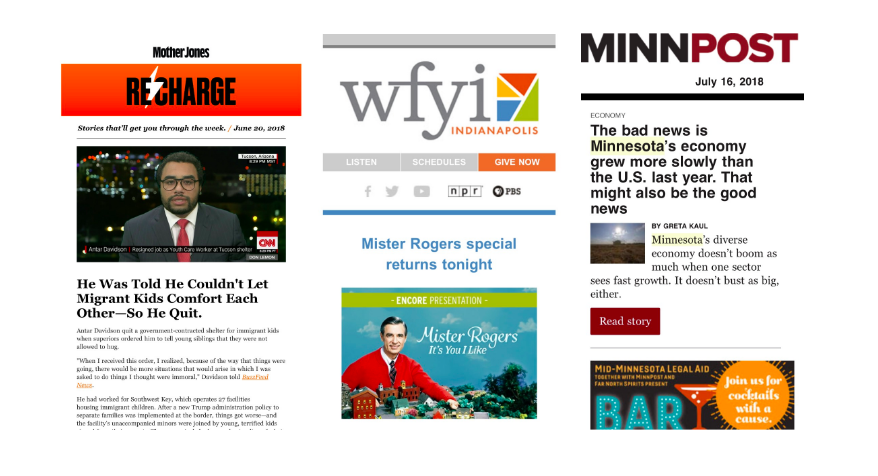A new year calls for new and improved newsletters for many nonprofit newsrooms, as newsletters are becoming core editorial products and important distribution channels to find new audiences. We have some resolutions for you.
Ninety percent of INN members could benefit from adopting at least one of five common best practices for their newsletters, from customized subject lines and longer article descriptions (but not too long). We outline them below.
These five recommendations emerged from an audit of member email newsletters conducted by INN’s Emma Bowen Foundation intern Nikita Advani last year. We covered easy fixes in an earlier posting; if you missed it, you can revisit it here.
INN members who are building or improving their newsletters can tap into a newsletter training series led by digital marketer Tim Windsor starting Feb. 20. Take the whole series or individual modules. Tim has a deep background in building news audiences for Patch and other media and businesses. Advanced training modules will be offered later in the spring; watch the ListServ and newsletter for more to come.
Happy New Year,
Jules Shapiro
Director of Marketing & Communications
Institute for Nonprofit News
Long-term newsletter optimization recommendations:
1. Customized Subject Lines
Fifty-eight percent of newsletters audited (50 of 86 newsletters) could have a livelier subject line, which would help increase open rates. Avoid subject lines that are the same as the headline of the first article or are the same daily (e.g. “Your Daily Read”). Try using a subject line that previews the newsletter’s content but leaves the reader wanting to open the email. Here are a few standout subject lines from the audit sample:
- “One order of farm bill, on the House”
- “Kansas Has A New Accent”
- “[SPECIAL INVESTIGATION] Trapped: a three-part series”
2. Add Data Tracking
Try using Google Analytics UTM tracking or use this function within MailChimp or other email service providers. Data tracking can help newsrooms learn more about their readers and gain insights from the data they receive. Check out this guide from SEMrush for more information about using UTM tracking.
3. Describe Articles
Sixty-three percent of newsletters audited (54 of 86 newsletters) used a one-sentence summary as an article description, or have no description at all. Data from INN’s audit suggested articles with a description leave the reader wanting more, thus driving higher click rates. Here are some examples:

INN Member newsletters with an optimal length for article descriptions.
4. Create Newsletter Brand Identity
Newsletter design could be improved by including images, avoiding the use of traditional blue used for links as the headline font color, and finding color combinations that work well together to increase aesthetic, click-throughs, and donations. For example, colors such as red and green work well because they are complementary colors, and colors such as green and turquoise work well together because they are analogous colors. When choosing colors, newsrooms should first consider color combinations that reflect the organization’s color palette and brand guidelines. Test and see how well the enhanced design performs against key performance indicators.

Here are some examples of newsletters with an evolved design:

INN Member newsletters with optimal designs.
5. Test Optimal Newsletter Length
To find the optimal number of articles to include in a newsletter, conduct A/B tests when sending newsletters. An A/B test is when two versions of the same content or message are created (in this case, newsletters) but with one variable being different in each version. Results on testing click-through rates will inform which version performed better and “won.” Many email newsletter service providers include this functionality, including MailChimp. Testing can also be applied to other areas, such as testing subject lines for best open rates.
PARTNER NEWSLETTER RESOURCES FOR NONPROFIT NEWSROOMS
Lastly, for those interested in learning more about newsletter creation, the Shorenstein Center recently partnered with The Lenfest Institute for Journalism and Yellow Brim on NewsletterGuide.org, a guide for enhancing editorial newsletters, based on research of how small nonprofit newsrooms are using email and newsletters. The guide also includes a series of customized templates and is meant as a 201-level guide, to bring an existing newsletter to the next level with a set of activities and strategies needed for elevation.
NEWSLETTER AUDIT METHODOLOGY
These tips were generated from a study of INN member email newsletters conducted by business student Nikita Advani at the University of Southern California in June and July 2018, working with the guidance of INN Communications and Marketing Director Jules Shapiro. Advani is an Emma Bowen Foundation fellow.
Advani surveyed 34 elements in 96 email newsletters, representing about 60 percent of INN’s members sites at the time. A sample of 21 newsletters came from participants in INN’s Amplify News Midwest project. The rest were randomly selected to generate a representative sample across local, regional, state, national, and global news organizations. INN also studied 13 members’ click rates and open rates in MailChimp.
Four categories of factors were measured: content, design, engagement and fundraising/marketing. They ranged from the frequency of publication to whether newsletters included an easy way for the reader to contact an editor. Advani compared newsletter elements such as subject lines and headlines with open rate and click rate data from MailChimp reports where available. Pivot tables were used to analyze what types of members needed improvement by category.
ABOUT INN WEBINAR LEADER TIM WINDSOR
Tim Windsor has been breaking new ground in digital news since he launched The Baltimore Sun's first website in 1996 and then grew that organization to a $17 million business over the next 12 years. He also helped create and launch the AOL/Patch Media network of nearly 1,000 community news sites throughout the USA, led digital strategy for The Johns Hopkins University and Lincoln Financial Media, and developed and implemented a content and SEO strategy for an emerging fintech leader, LendingPoint.